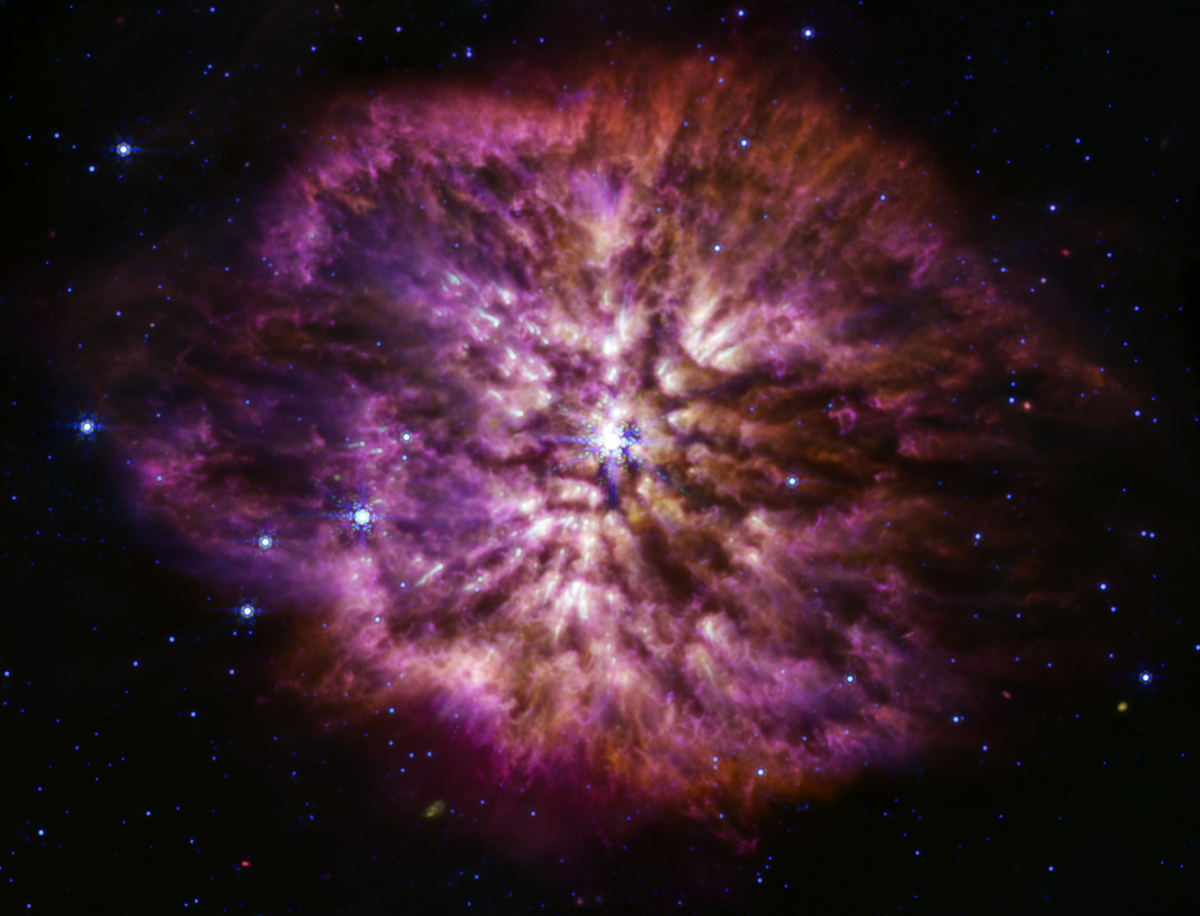The picture above is NASA shareA picture of Wolf-Rayet star WR 124 taken last June. “Wolf-Rayet stars” are a classification of stars that are the brightest in the sky and one of the shortest-lived stars, so their numbers are extremely rare – only about 500 or so have been found in our entire Milky Way galaxy There are less than 1,000 such stars in the nearby galaxies.
WR 124 is about 15,000 light-years away from Earth, has a mass about 33 times that of the Sun, and a diameter 26 times that of the Sun. The extremely high quality makes its internal fuel burn at a high speed, not only the overall brightness reaches 1 million times that of the sun, but the surface temperature is as high as 40,000K. Although WR 124 is still a relatively young star, it is expected to end with a supernova explosion in about hundreds of thousands of years, ending its life.
During this process, the Wolf-Rayet star keeps throwing matter outwards, producing the large smoke and dust nebula with changing light and shadow outside. Due to the high temperature of the Wolf-Rayet star, most of its radiation is in the ultraviolet spectrum, which is invisible to the naked eye, but these nebulae are clearest in the infrared band, which is suitable for study by the James Webb Space Telescope (JWST). scope. NASA explained that before JWST, astronomers lacked enough data to judge the composition and density of dust clouds around WR 124, and whether there were enough large dust particles to survive the supernova explosion. Now they finally have suitable data Come to research.


